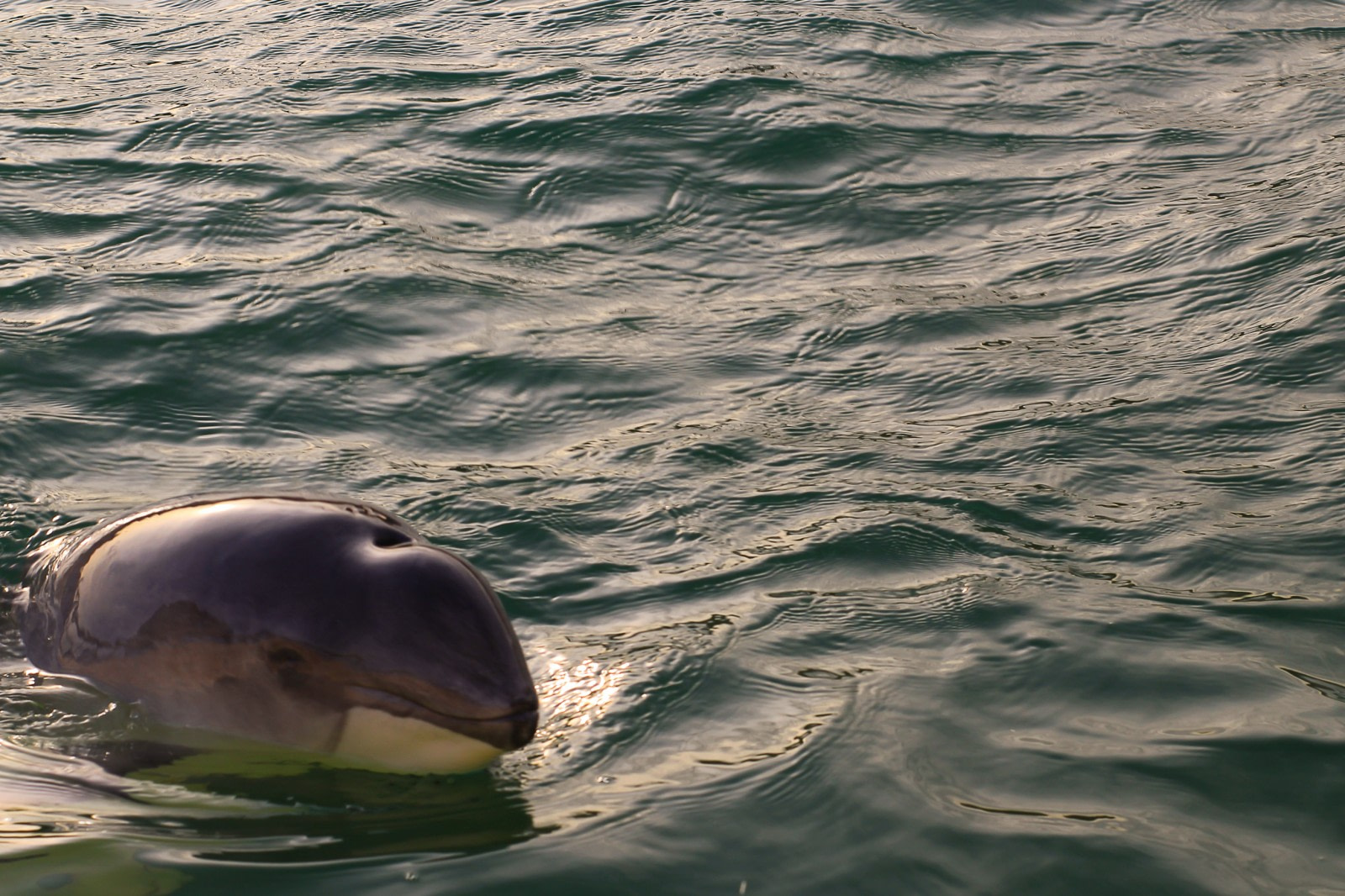Name: Harbour Porpoise, Puffer, Puffing Pig (Phocoena phocoena)
Length: 1.5 – 1.9 metres.
Weight: 60 - 75 kg, males being smaller.
Location: Northwest and Northeast coast of North America, Northwest and West coast of Europe down to Northwest coast of Africa, off the east coast of Asia.
Conservation status: Least Concern.
Diet: Fish, squid, crustaceans.
Appearance: Back is dark grey; sides are a lighter grey, underside closer to white.
How do Harbour Porpoises feed?
In shallower waters the Porpoises will tend to stay near the bottom. In deeper waters they will tend to stay in a mid-range. Harbour Porpoises are generally solo foragers but have been known to hunt in small groups. Dives usually last for only about a minute but they can last as long as 5 minutes, and the deeper example of recorded dives have been noted at 220 metres. They have small spade-shaped teeth which are used to grab their prey, which is then swallowed whole. In murkier waters they use echolocation to find food.
Are Harbour Porpoises social?
Harbour Porpoises are generally loners. However they have been seen grouped in groups (called “shoals”) of up to 5 members.
How fast do Harbour Porpoises move?
Harbour Porpoises can reach speeds of up to about 25 km per hour.
What are Harbour Porpoise birthing rituals like?
Females become sexually mature at around 3 or 4 years. They are then able to give birth every year for a number of following years. They are able to be both pregnant and lactating at the same time. Harbour Porpoises mate with multiple partners. Gestation lasts a bit over 10 months. Birthing occurs around early summer. The babies are between 65 and 85 cm long at birth and weigh 6.5 – 10 kg. Calves are weaned after 8 – 12 months.
How long do Harbour Porpoises live?
Harbour Porpoises live for about 15 years in the wild.
How many Harbour Porpoises are there today?
There are about 700,000 Harbour Porpoises in the world today.
Do Harbour Porpoises have any natural predators?
Harbour Porpoises are hunted by Sharks, Killer Whales, and sometimes Gray Seals who will bite off chunks of the Porpoises for their high-energy fat. They are also sometimes attacked and killed by Bottlenose Dolphins (but not eaten).
7 Pleasing Harbour Porpoise Facts
- Harbour Porpoises are one of the smallest examples of marine mammals.
- Harbour Porpoises stay close to coasts and estuaries (as opposed to open waters), making them one of the most familiar of marine mammals to people. However they are shy and are generally not approachable like Dolphins.
- Harbour Porpoises are one of the few marine mammals that will travel long ways up rivers, and can sometimes be seen hundreds of kilometers inland from the ocean.
- There are 4 known distinct populations of Harbour Porpoise:
- Phocoena phocoena phocoena – North Atlantic, West Africa
- P.P. relicta – Sea of Azov, Black Sea
- P.P. (unnamed) – Northwest Pacific
- P.P. vomerina – Northeast Pacific
- The word “porpoise” descends from a Medieval Latin word porcopiscus which is a compound of porcus which means “pig” and piscus which means “fish”.
- Unlike dolphins, Harbour Porpoises have blunt snouts with a streamlined forehead (Dolphins having long snouts and pronounced foreheads).
- During the mating season a male Harbour Porpoise’s testes will enlarge to account for up to about 5% of his total weight.



